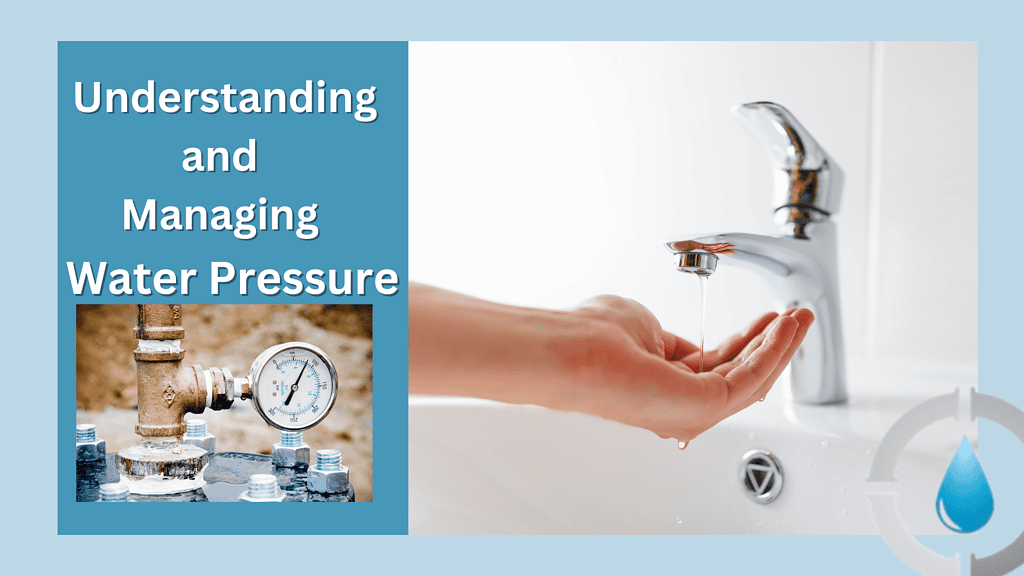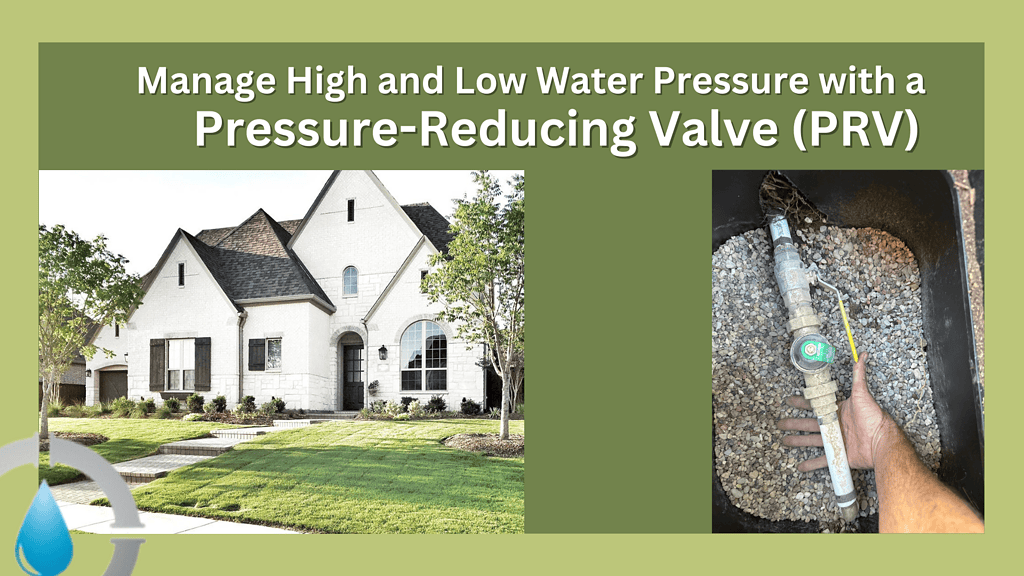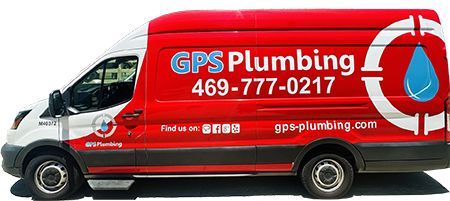
Water Pressure Guide for Home Plumbing: Why It Matters and How to Manage It
Managing water pressure is crucial for maintaining a healthy and efficient plumbing system in your home. Incorrect water pressure can lead to various issues, such as leaks, burst pipes, and damaged appliances, resulting in costly repairs. In North Texas, water pressure management is even more important due to fluctuating seasonal changes that can put additional stress on your plumbing. Whether you’re dealing with high water pressure that strains your fixtures or low water pressure that disrupts daily routines, understanding how to manage water pressure effectively is key. In this guide, we’ll explore why managing water pressure matters, how to check it, and what steps you can take to prevent common problems and keep your home’s plumbing in top shape.
How Water Pressure Affects Your Home’s Plumbing
Water pressure is more than just how strong the flow feels when you turn on a faucet. It’s the
force that drives water through your pipes, and it affects everything from your morning shower
to the lifespan of your appliances. To effectively manage high and low water pressure, a pressure-reducing valve can be your best tool in maintaining a balanced and safe plumbing system.Here’s why maintaining the right water pressure is essential:
- Preventing Damage: High pressure can put excessive strain on your pipes, leading to leaks, bursts, and damage to fixtures. Over time, this can result in costly repairs and even water damage to your home.
- Extending Appliance Life: Appliances like water heaters, dishwashers, and washing machines are designed to operate within a specific pressure range. When water pressure is too high, these appliances can wear out more quickly, leading to premature failure and unexpected expenses.
- Ensuring Efficient Water Use: Low water pressure, on the other hand, can make daily tasks frustrating and inefficient. Whether it’s taking longer to fill a bathtub or waiting for your washing machine to finish a cycle, low pressure can disrupt your household routine.
Simple DIY Steps to Check Your Home’s Water Pressure
Checking your water pressure is a quick and easy task that can save you from potential
headaches down the line. If your readings indicate pressure issues, a pressure-reducing valve is essential to manage high and low water pressure, protecting your home’s plumbing. Here’s how you can do it yourself:
- Purchase a Water Pressure Gauge: You can find a water pressure gauge at most
hardware stores for a few dollars. This tool will give you an accurate reading of your
home’s water pressure. - Choose the Right Faucet: Attach the gauge to an outdoor hose bib or a faucet close to
the main water supply, such as the one connected to your washing machine. This
ensures you get a reading that reflects the overall pressure in your home. - Turn Off All Water-Using Appliances: To get an accurate reading, make sure all other
faucets and water-using appliances are turned off. This prevents any interference with
the measurement. - Read the Gauge: Open the faucet fully and check the gauge. The ideal water pressure
range for most homes is under 75 PSI. If your reading is below 50 PSI, the pressure is
considered low. If it’s above 80 PSI, your water pressure is too high, and it’s time to take
action.

Common Causes of High Water Pressure and How to Fix Them
If your water pressure exceeds 80 PSI, you may be at risk of damaging your plumbing system
and appliances. Here’s what you can do:
- Install a Pressure-Reducing Valve (PRV): A PRV can be installed on your main water line to automatically reduce incoming water pressure to a safe level. If you already have a PRV and are still experiencing high pressure, it might need to be adjusted or serviced by a professional.
- Check for Hard Water Issues: Hard water can contribute to high pressure by causing mineral deposits that restrict water flow. Consider installing a water softener to protect your pipes and appliances.
- Protect Your Appliances: High water pressure can shorten the lifespan of your appliances, including your water heater, dishwasher, and washing machine. Regularly checking and adjusting your water pressure helps ensure these expensive investments last as long as possible.
Troubleshooting Low Water Pressure: Solutions for Your Home
If your water pressure is below 50 PSI, you might face issues like slow water flow or inconsistent
pressure. Here’s how to address it:
- Check Individual Fixtures: If only one fixture is affected, the problem could be as simple as a clogged aerator. Unscrew the aerator from the faucet, clean it, and see if the pressure improves.
- Inspect Your Water Heater: Low hot water pressure could indicate an issue with your water heater. Ensure the shut-off valve near the heater is fully open, and check for signs of sediment buildup.
- Examine Your PRV: If your home is equipped with a PRV, it might need to be adjusted. A licensed plumber can help you fine-tune the valve to ensure the right pressure throughout your home.
- Investigate for Leaks: Low water pressure can also be a sign of a leak somewhere in your plumbing system. Look for signs of water damage or unexplained increases in your water bill, and contact a professional if you suspect a leak. Learn How to Increase Water Pressure in Your Home – Bob Vila
The GPS Plumbing Difference: Local Expertise You Can Trust
At GPS Plumbing, we understand the unique plumbing challenges faced by homeowners in our
community. Whether it’s managing the effects of hard water or ensuring your system can
handle seasonal changes, our team is here to provide personalized, expert service. At GPS Plumbing, we help homeowners manage high and low water pressure with pressure-reducing valves, ensuring your system operates smoothly. Here’s what sets us apart:
- Community-Centered Service: As a locally owned and operated business, we’re committed to serving our neighbors with honesty, integrity, and top-notch expertise. We take pride in being the go-to plumber for homeowners in our area.
- Comprehensive Solutions: We don’t just fix the symptoms; we address the root causes of your plumbing issues. From installing pressure-reducing valves to offering water heater maintenance, we provide solutions that protect your home for the long term.
- Proactive Maintenance: Regular maintenance is key to preventing costly plumbing emergencies. We offer comprehensive plumbing inspections and maintenance services to keep your water pressure at the ideal level and your plumbing system in top shape.
Take Control of Your Water Pressure Today
Maintaining the right water pressure is essential for protecting your home, appliances, and
plumbing system. Regular checks and prompt adjustments can save you from costly repairs and
extend the life of your fixtures and appliances. If you’re experiencing water pressure issues or
simply want to ensure everything is working as it should, don’t hesitate to reach out to GPS
Plumbing.
Our team of licensed, experienced plumbers is here to help you keep your home’s plumbing
system running smoothly. Contact us today for a water pressure check, plumbing inspection, or
any other plumbing services you may need. At GPS Plumbing, your home’s health is our top
priority.
and improve your home’s plumbing efficiency.
Explore Our Water Pressure and Conservation Guides:

